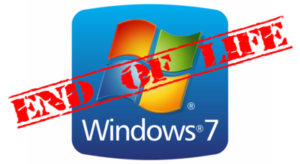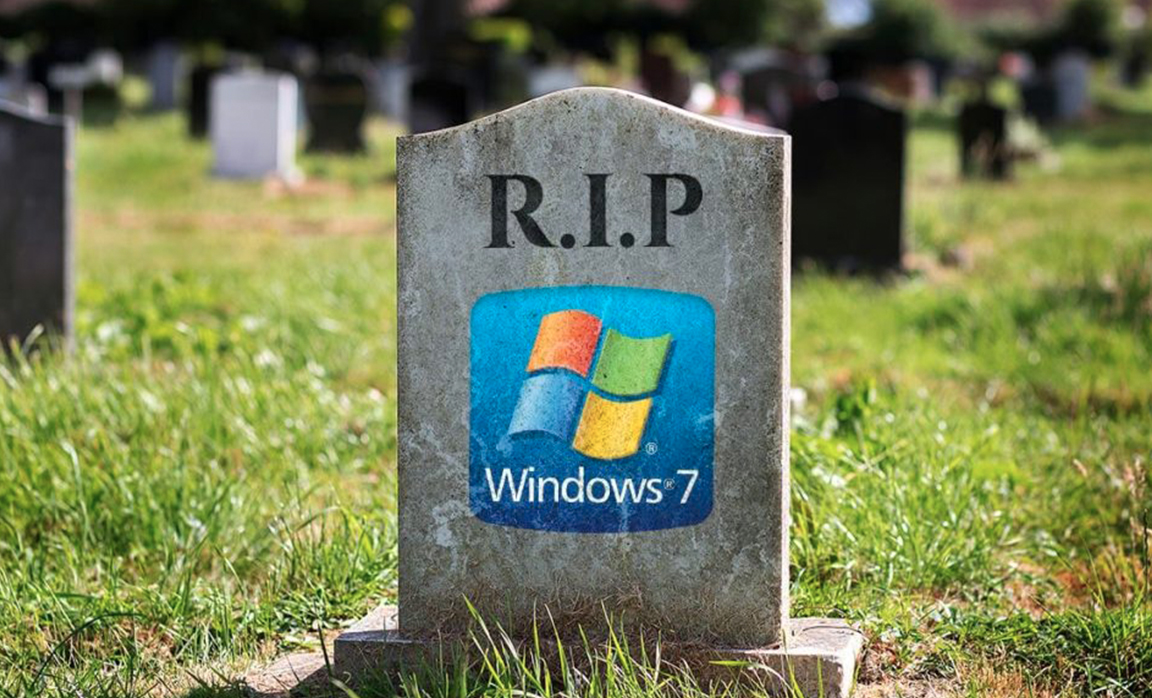It’s official, the End of Life of Microsoft Windows 7 support was January 14th, 2020. Either you’ve read about it, heard people talking about it, or maybe even your IT provider has mentioned it to you. But what does it really mean?
What The End of Windows 7 Means
 When Microsoft ended support on products such as Windows 7 it means several things for the end user. In fact, you may not have even noticed that Windows 7 is officially done with. This is because your computer has continued to work well past January 2020. Unfortunately, the end of Windows 7 does mean no technical support, no software updates, and no security updates. You can’t call Microsoft with questions, they won’t submit any new product enhancements, and most importantly, they will not release any more security updates. Even though your pc will still work, over time it will rapidly become a risk as malicious software hackers find ways to exploit it (and you).
When Microsoft ended support on products such as Windows 7 it means several things for the end user. In fact, you may not have even noticed that Windows 7 is officially done with. This is because your computer has continued to work well past January 2020. Unfortunately, the end of Windows 7 does mean no technical support, no software updates, and no security updates. You can’t call Microsoft with questions, they won’t submit any new product enhancements, and most importantly, they will not release any more security updates. Even though your pc will still work, over time it will rapidly become a risk as malicious software hackers find ways to exploit it (and you).
Options for Moving to Windows 10
You have two options when it comes to moving to Windows 10: upgrade your existing computer, or replace your computer altogether. Obviously, each one has its pros and cons. Upgrading is generally less expensive up front. However, you could be running a version of an application that is not compatible with Windows 10. You could also be running an extremely bloated version of Windows 7 that is making you pull your hair out due to slowness. These two problems will compound when you run the Windows 10 upgrade. In addition, if your computer is old enough, there’s a chance that the hardware is not up to the minimum requirements set forth by Microsoft.
The true cost of slow systems can be surprisingly high for any business. Slow workstations are estimated to drop productivity by 2.75% (13 minutes per day, or 5.5 days per year). (Reference: Warranty Master: The True Cost of Slow Computers http://warrantymaster.com/blog/true-cost-slow-computers). As a result, the 1-year ROI for replacement of old systems is often 5X to 10X.
Recommendations for Moving to Windows 10
So what should you do if you’re still using Windows 7? For the most part, we recommend that you invest a little more into technology and replace your aging Windows 7 pc’s with new Windows 10 computers. This investment will give you the opportunity to upgrade to newer software that is better compatible with Windows 10 and the hardware that accompanies it. You also have the chance to start fresh with a new pc that is running at an optimum pace. Windows 10 comes with some nifty features that make it well worth the time and money to upgrade.
If you’re worried about which Windows version your business is operating on, check with your IT team. Now is the time to transition over to Windows 10 if you’re still working on Windows 7.
Need Help Updating to Windows 10 or Have Questions?
Our NetSmart Plus Team is happy to help! Submit your information and one of our team members will contact you shortly!
